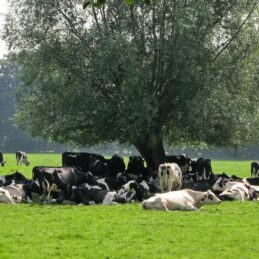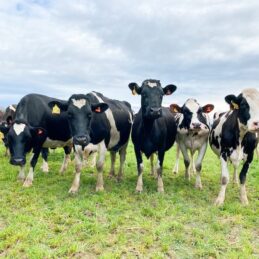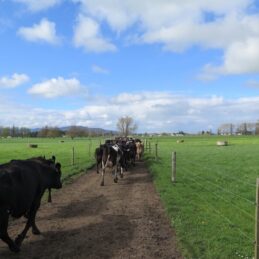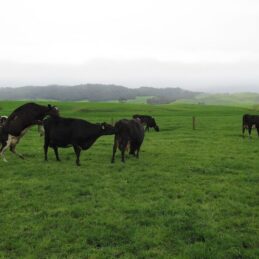Written by Dunstan’s nutritionist, Gretel Webber Assoc.Dip.App.Sc, BBus, MSc Equine
Nutrition of the pregnant mare has a huge impact on the subsequent foal. Ensuring that the mare maintains adequate body condition is important (without becoming overweight) as this ensures she has sufficient body condition to take on the energy demands of lactation once she has foaled. If the mare is to be re-bred, maintaining adequate body condition will improve the likelihood of early conception.
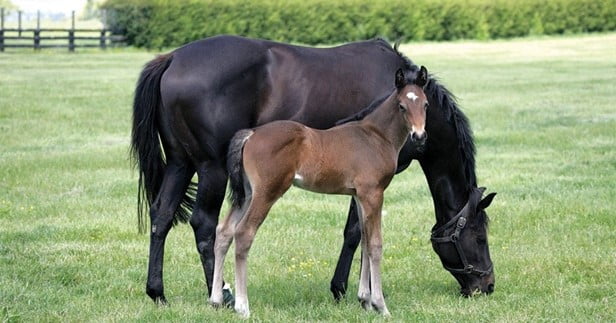
Nutrition of the mare is important to maintain body condition once foaled
The last trimester of the mare’s pregnancy is critical to provide her with the appropriate intakes of key trace minerals including Copper, Zinc, Selenium and Manganese. If this is done, it will assist in the development of a sound skeleton in the subsequent foal and the future athlete.
How these key nutrients will be provided will depend on the individual mare (her metabolic rate) and pasture availability. Mares that are lighter and require hard feed to maintain condition will receive adequate nutrient intake in their last trimester if fed a good quality premixed full feed, formulated for mares and young stock, at a minimum of 2.5kg daily (based on a 500kg bodyweight). However, inadequate supplementation will arise if a ‘full feed’ is not being fed at the recommended intake.
When mares are holding sufficient body condition on forage intakes alone and do not require the recommended intake of a full feed, a more concentrated source of supplementary feed is appropriate – a feed that provides more nutrients per kg or alternatively a high- quality vitamin and mineral supplement. A low intake balancer pellet often fed at a rate of approximately 500grams/day will provide a similar contribution of vitamins and minerals as a full feed will fed at 2.5kg daily.
Providing pregnant mares with the recommended intake of key minerals, particularly Copper in their last trimester of pregnancy will generate feotal liver stores of these nutrients in the foal. These nutrients will be utilized in the first 3 months of the foals life for development. Research shows providing adequate nutrition during this time reduces the incidence of developmental disorders in the foal including the occurrence of OCD (Osteochondrosis Dissecans).
As well as adequate mineral fortification of the diet being critical in sound skeletal growth of the young foal the form in which calories are provided can also influence growth and endochondral ossification. Research has shown that reducing the amount of starch in the diet and thereby exchanging starch-laden grains for fibre and fats assists to minimise the negative impact that insulin can have on the developing joints. These low-starch, high fibre diets now widely used in the equine breeding sector have the additional benefit of being easier on the horses digestive system, resulting in less digestive disturbances as well as reduced starch intake seeing a more settled disposition and reducing the likelihood of accidents through highly strung behaviour.
Once mares have foaled, their energy requirements increase to meet the demands of lactation. It is therefore important to ensure that mares are provided with adequate supplementary feed to maintain body condition.
Ready, get set – mate?
Lori Grinter, Nutritech Area Manager for Hauraki Plains, North Waikato & South Auckland, talks about what to look for in a “Mating Top Up” product and what inspired her to develop Nutritech’s New Aqua Trace® Mating Top Up.
I would often get inquiries about ‘mating top-up’ products or see these products on farms at this time of year. When I look at these types of products, I like to consider the following when comparing products:
- What are the product specifications of the individual mating products?
- Does the label tell you what is in the product (ingredients and elemental levels)?
- If there are no (or vague) specifications: what is the customer feeding their cows? What have they paid for? What benefit could be expected using unknown specifications?
- What else is being supplemented on farm (e.g., in water, mixer wagon, in shed)?
- Are products being doubled up? Is this adding benefit or just cost?
I wanted a product that reflected the nutritional needs of cows out grazing – so we designed a top-up to be fed alongside a routine trace mineral product. A 5 ml dose of AquaTrace® Mating Top Up offers:
- Iodine (10 mg): responsible for visual signs of heat
- Selenium (2 mg): supports the immune system and reproductive tract. Evidence supports that selenium improves follicle health (developing eggs), helping to reduce early embryonic death in the first month of pregnancy.
- Vitamin A (10,000 IU): for tissue and bone formation, growth, milk production and reproduction.
- Vitamin D (3,000 IU): assists calcium and phosphorus absorption – supplementation is required when conditions are overcast.
- Vitamin E (50 mg): immune system support, protects biological systems and benefits to reproductive health.
Fortunately, you do not need to farm in Lori’s area to get excellent nutritional support and your hands on the AquaTrace® Mating Top Up. Call your local area manager or ask your local reseller.
Available as a 20 L and 200 L drum.


